North Korea’s Energy Sector: Hydropower Stations and Policy
Hydropower is the dominant form of electricity generation in North Korea. The country’s numerous mountains and rivers make it an attractive choice for power generation. As noted in article one of this series, Statistics Korea estimates it accounted for 53 percent of all power generation, while Nautilus Institute put hydro at 76 percent.
At the same time, the country experiences harsh winters when frigid temperatures can cause rivers to freeze, limiting flow to the country’s key power plants. Moreover, the quality of materials and engineering of many of the large dams pose significant challenges to their performance and sustainability over time. This installment of our series on North Korea’s energy infrastructure will examine one of North Korea’s largest hydroelectric power installations: Huichon Power Stations No. 1 through 12. Construction of the system first started during the Kim Jong Il era and ended in the Kim Jong Un era. Collectively, this system of power stations illustrates a change in North Korean government policy toward the way hydro is used.
Huichon Power Stations No. 1 and 2
The promise of Huichon Power Stations No. 1 and 2 was a new source of electricity that would significantly help Pyongyang’s perpetual electricity issues. Under the original plan announcement, these plants were meant to be capable of generating around 300 megawatts of electric power and supposed to keep the lights on in Pyongyang.
As such, they were a key project for Kim Jong Il, and he visited several times during construction. His first reported visit was in March 2009, when he inspected dam construction for the first and second power plants and set a completion date that elevated the project’s importance even higher.
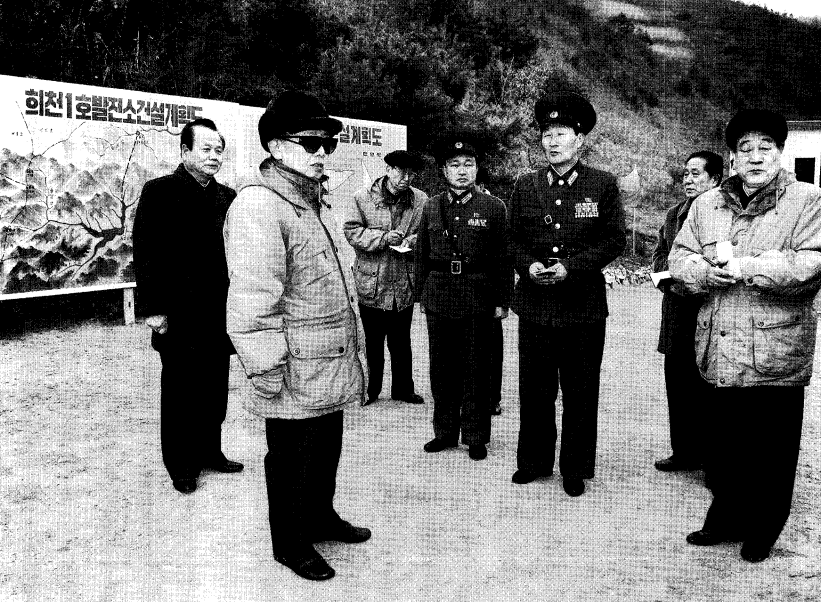
The two power plants were to be completed by early 2012—just in time for the 100th anniversary of the birthday of Kim Il Sung.
As such, the entire North Korean propaganda machine mobilized around the effort to ensure success, and Kim called on “the whole Party and army and all people” to contribute to its construction. State propagandists produced posters supporting the project.
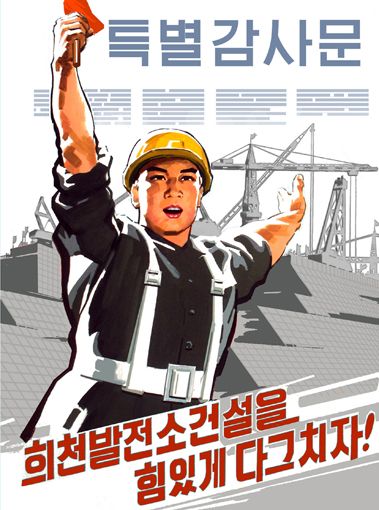
Kim Jong Il would visit the site at least five additional times before his death in December 2011.
A few months after he died, Huichon Power Stations No. 1 and 2 were declared complete on April 6, 2012.[1]
Huichon Power Station No. 1 sits near the entrance to the Huichon Reservoir and is fed by an approximately 30-km-long underground waterway that runs from the Ryongrim Reservoir and took more than two years to build.
Such an arrangement is not usual in North Korea, where several hydroelectric power stations are fed by long waterways. Original plans for the tunnel were even longer, but state media reported, “the soldiers of the Korean People’s Army halved the total length of the tunnel from the original design.”
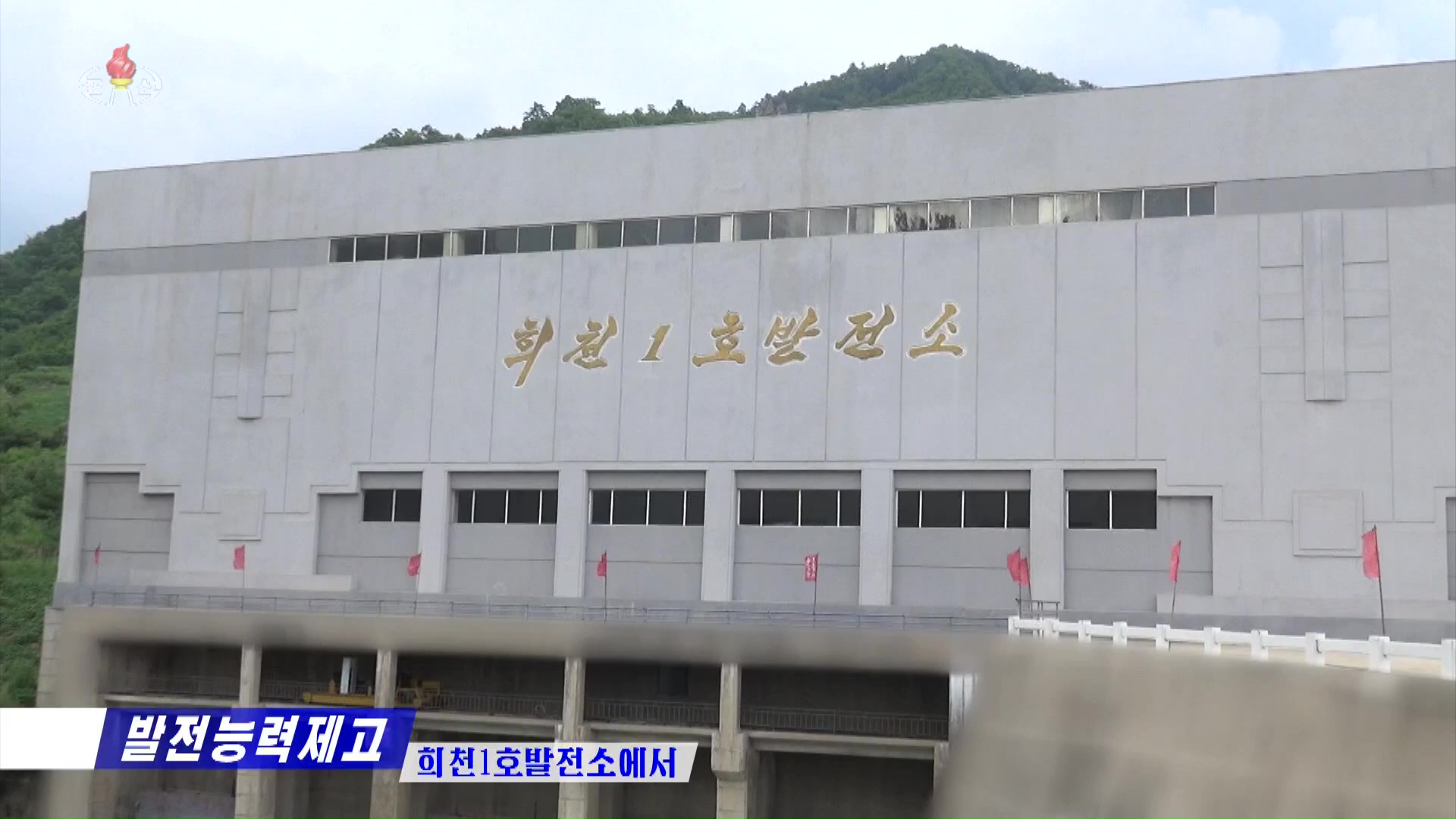
Huichon Power Station No. 2 is a more conventional arrangement fed by the Huichon Reservoir. A large dam across the river was completed on April 9, 2011, thus beginning the process of flooding the valley and creating the reservoir.
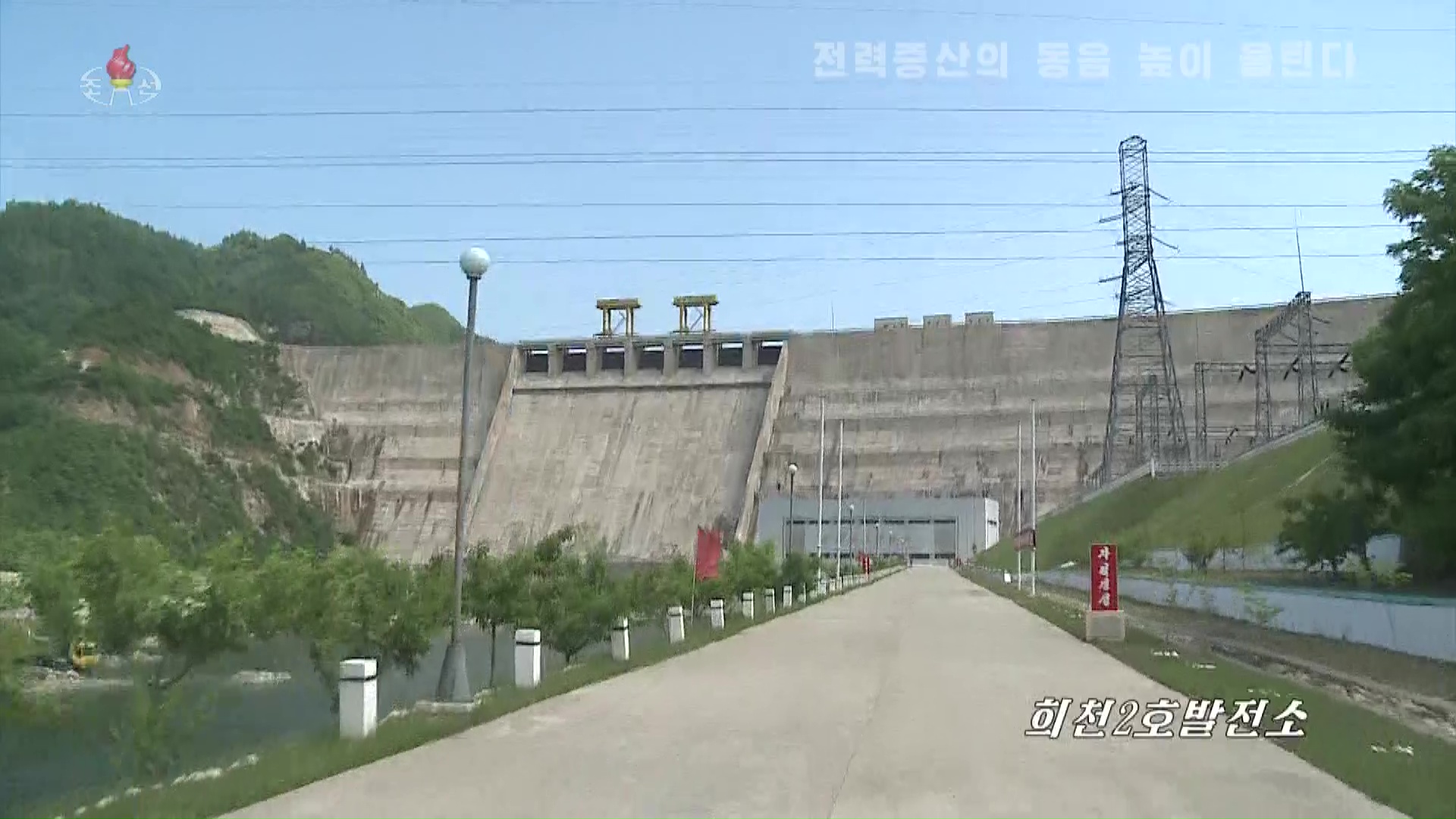
A New Strategy
Grand power projects like Huichon and similar dams at Nyongwon, Paektusan Hero Youth Power Station and Orangchon,were symbolic of the Kim Jong Il era. But as the Kim Jong Un era began and likely as a result of engineering problems on such large structures, signs of a change in national strategy became apparent.
In 2012, North Korea disclosed plans to build 10 new hydroelectric power stations downstream from the two Huichon power stations. The cascade system would see the power plants located one after another along the river and be powered by small dams. Each would generate 10 megawatts of electric power, and the entire project would take seven years to complete, according to a North Korean submission to the United Nations Framework Convention on Climate Change (UNFCCC).
It is unclear if the change in strategy was because of Kim Jong Un taking over or if it had already been in the works, but it signaled a shift away from large power stations towards more medium-sized power stations. Eventually, the strategy would expand to include small-scale power stations intended to serve local communities as well.
The Chongchon Cascade
Construction of the Chongchon Cascade began on January 30, 2013, with a ground-breaking ceremony. Dubbed in state media as the “second-phase project of the Huichon Power Station,” the plan was to build the ten power stations outlined in the report sent to the UN a year earlier.
While the original proposal said the project would take seven years, completion was declared much earlier than that. The first power stations in the cascade began operating in November 2015, less than three years after construction began.
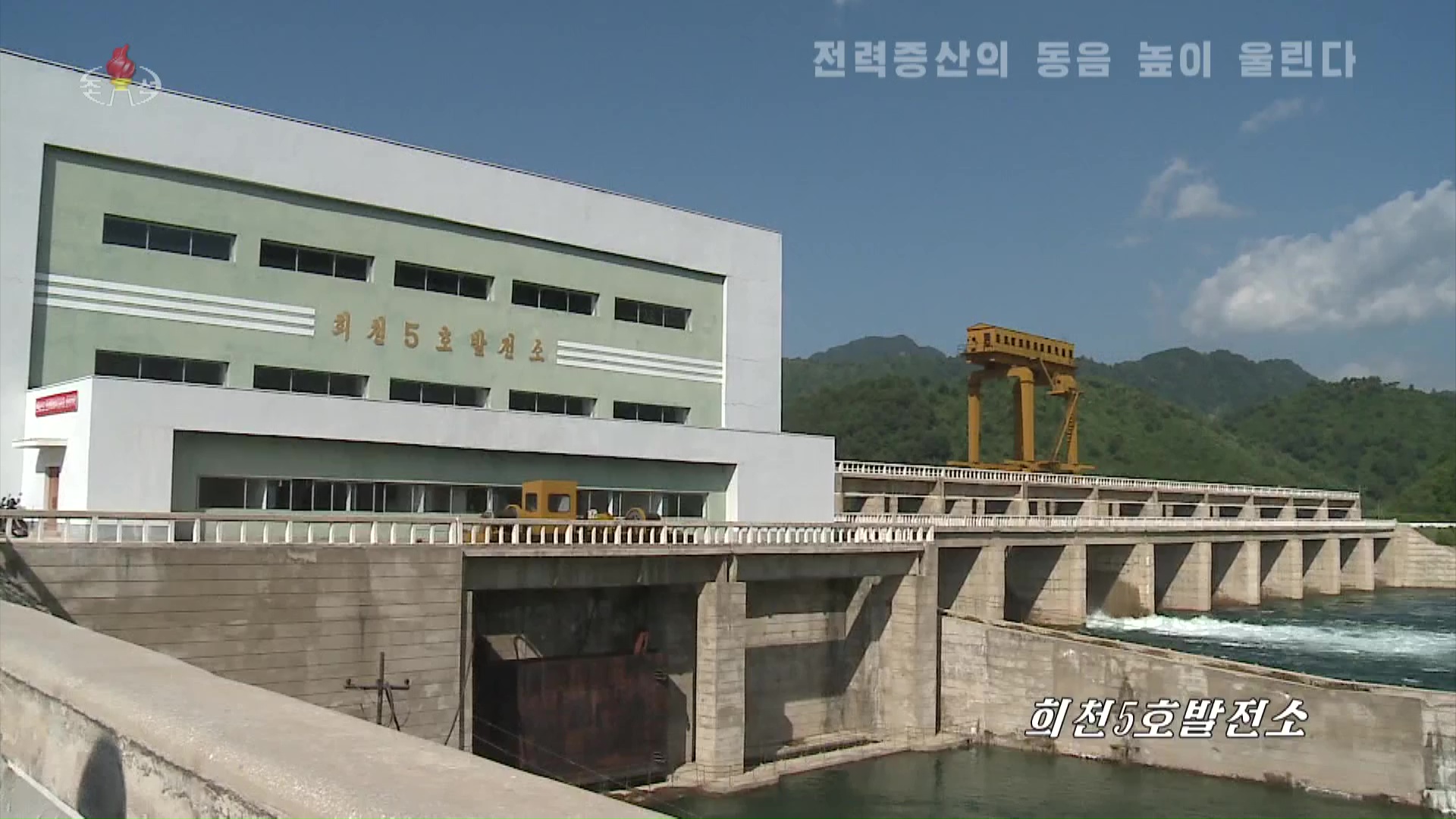
Notably, while the initial two stations were a focus for Kim Jong Il, Kim Jong Un does not appear to have visited them at all. No published reports put him at either the two original power stations or the new cascade, even on their respective opening days. While news of the Chongchon Cascade opening was reported on page three of the Rodong Sinmun party daily on November 18, 2015, the front page carried photos of Kim at a new fish farm in Pyongyang.[2]
Each of the new power stations appears similar in design, based on satellite imagery and Korean Central Television footage. Each power station includes a large turbine hall where the tops of the turbines, typically two per station, are visible. Each is capable of generating around 5 kilowatts of electricity. A control room maintains a watch over the facility.
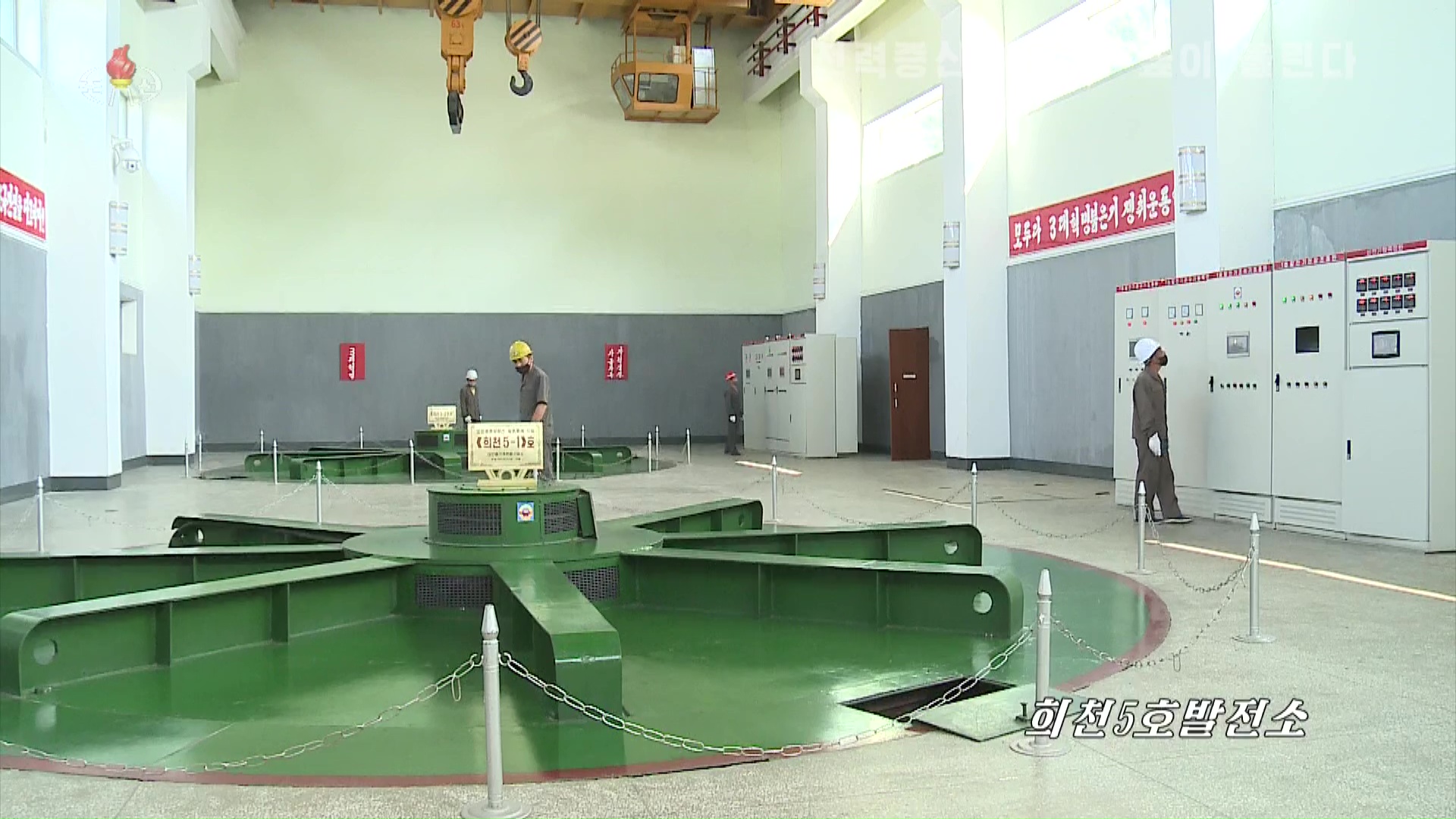
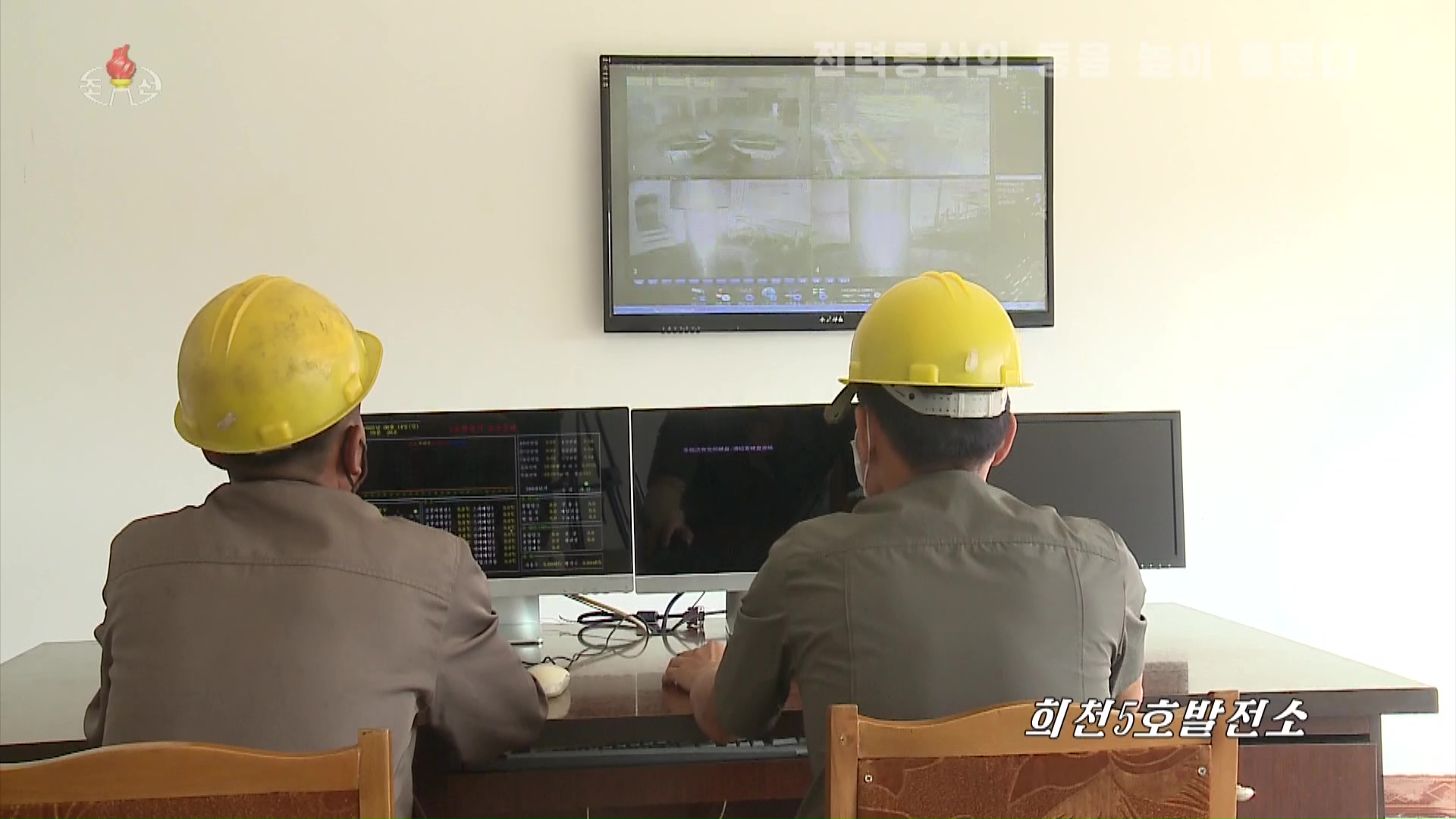
With Huichon Power Stations No. 3 through 12 in operation, the entire project covered 80 kilometers of the Chongchon River from Tongsin County in Jagang Province to Kaechon County in South Phyongan Province.
The power generated by each of the ten smaller stations appears to be for regional use and solidified the new strategy of local power generation over mega dams.
Coming Next
In the next installments, we will examine some of North Korea’s recent power station projects, including the Orangchon Power Station, which was recently completed after 40 years of work, and North Korea’s latest policy of small-scale hydro stations to serve local communities.
- [1]
See “Kim Jong Il Provides Field Guidance to Construction Sites of Huichon Power Station,” Korean Central News Agency, September 17, 2009, https://kcnawatch.org/newstream/1451887868-36755316/kim-jong-il-provides-field-guidance-to-construction-sites-of-huichon-power-station/; “Kim Jong Il Visits Construction Sites of Huichon Power Station,” Korean Central News Agency, January 3, 2010, https://kcnawatch.org/newstream/1451888535-996133795/kim-jong-il-visits-construction-sites-of-huichon-power-station/; and “Huichon Power Station Goes Operational,” Korean Central News Agency, April 6, 2012, https://kcnawatch.org/newstream/1451900037-527832083/huichon-power-station-goes-operational/.
- [2]
